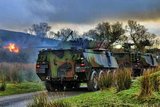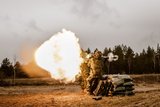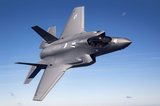Sea Air Space 2011: Service chiefs outline the future of naval airpower
US Navy (USN) and Marine Corps (USMC) commanders described their vision of the future of maritime air assets at the Navy League Sea Air Space exposition on 12 April.
Addressing delegates in Washington, DC, VAdm David Architzel, commander Naval Air Systems (NAVAIR) Command said there were 'challenges abound' as the USN and USMC maintained a 'huge presence across the globe'.
'Over the past year, development of air assets has continued at a pace never seen before,' he stated while describing how the EA-18G Growler had already seen operations in Afghanistan, Iraq and most recently, a 'rapid movement to support operations in Libya'.
In addition, Architzel highlighted the MH-60 Romeo and Sierra variants; Persistent Ground Surveillance System which is in 'full support of Forward Operating Bases across Afghanistan today'; MQ-8B Fire Scout which is due to be rolled out in support of army operations in Afghanistan this year; MV-22 Osprey which is in 'full stride'; and AH-1Z Cobra which reached its initial operating capability in February.
Looking ahead, Architzel described how the UCAS-D programme would lead onto the future UCLASS system with technology being 'leveraged onto that future system'. But in the medium term, he warned how important it was to manage that transition from current readiness to future capabilities; 'We must maintain legacy assets as we go forward, [including platforms] such as P-3 Orions and legacy Hornets as well as CH-46 Sea Knight helicopters.'
Elsewhere, Lt Gen Terry Robling, USMC deputy commandant for aviation, said: 'There is a naval decade ahead, seeing us return to our naval heritage while in a desert war. We are in a fight with legacy aircraft while transitioning to new ones. Although we are fighting in Afghanistan and Iraq, don't forget we came from the sea.
'Today, most recently in Libya, we see how important the naval teaming of amphibious ships and naval and Marine Corps forces bring to the fight.' He also mentioned his hopes to receive six CH-53K platforms in 2016 with an IOC in 2018 'if things go right'.
'We require rugged, expeditionary but not exquisite systems,' he said. 'Tomorrow's battlefield will be network centric, providing a ground commander with a single picture for flexible and tactical actions with strategic impact.'
Finally, VAdm David Venlet, USN program executive office for the F-35 Lightning II programme, described his intent for the USMC STOVL variant to begin initial sea trials later this year as well as the navy's carrier variant to begin land-based carrier integration tests also scheduled to take place within months.
'We are looking to deliver the last “B” and two “C” test aircraft by the end of Spring. We hope to deliver the first 16 production aircraft for the US Air Force and Marine Corps this year,' he said.
'This plan has been resourced properly and I do have confidence in the plan,' he explained while outlining how four A, two B and single C variants had completed 273, 365 and 45 flights respectively.
More from Defence Notes
-
![US National Security Strategy prioritises advanced military capabilities and national industry]()
US National Security Strategy prioritises advanced military capabilities and national industry
The 2025 NSS has emphasised investment in the US nuclear and air defence inventory and national industry, but it leaves multiple unanswered questions on how the White House will implement this approach.
-
![Canada set to look away from its neighbour and across the Atlantic for partners]()
Canada set to look away from its neighbour and across the Atlantic for partners
While non-EU UK struggles to join the Security Action for Europe initiative, which provides loans for defence programmes, Canada has become the first country outside Europe to get access – and did so for a nominal fee.
-
![NATO experiments with solutions to integrate networks, AI and uncrewed systems]()
NATO experiments with solutions to integrate networks, AI and uncrewed systems
During the latest edition of the NATO DiBaX, the alliance tested multiple capabilities to inform requirements for future efforts.
-
![Leonardo unveils plans for Michelangelo air defence dome]()
Leonardo unveils plans for Michelangelo air defence dome
The new multi-layered defence system will harness AI to neutralise airborne threats and protect Europe from Russian aggression.
























